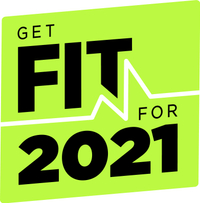The first day in the gym – commercial or home gym – can be intimidating. With so many exercises and bits of equipment to choose from, it’s hard to know where to start. So, to save you time and stress, here are the essential moves for dumbbells, barbells and kettlebells that you need to know.
Gym and home workouts should be slightly more nuanced than grabbing the nearest dumbbells and churning out some half-hearted biceps curls. There are better and far more effective ways to build muscle.
The best way to maximise gains and minimise time spent working out is to focus on compound exercises. Compound exercises work multiple muscles at the same time which is great for improving muscle coordination and for weight loss too. Not to mention, working many muscles simultaneously can also boost metabolism, which can also aid weight loss.
We have listed here the two most important exercises for each piece of home gym equipment and the best ways to perform them correctly. With the best dumbbell, best barbell and best kettlebell exercises, anyone can hit the ground running and start building muscle fast.
On safety and nutrition
Resistance training is great for muscle building and weight loss but it is not without caveats. First and foremost, most types of resistance training involves dangling heavy weights above your head or holding these weights in a position that puts a lot of pressure in certain areas of the body. We recommend using smaller weights until the body develops a certain degree of ‘muscle memory’ that will enable you to maintain correct form, even when lifting heavier weights. Rushing the process will result in injuries and not gains.
Diet is also equally as important for both muscle building and weight loss. ‘Fuelling’ the body correctly will reduce recovery time and speed up the muscle building/weight loss process. We recommend drinking plenty of water throughout the day to keep the metabolism going and help repair on a cellular level.
Adding more protein and healthy carbs to your diet is also essential. Protein will help recovery and muscle building, which is beneficial even if you aren’t planning on ‘getting big’, whilst healthy carbs will be used by the muscles during workouts as fuel (we are simplifying things a little).
Essential dumbbell exercises

Dumbbell overhead/military press
In depth: How to do the overhead press
Why? The ultimate shoulder and triceps exercise to get big arms.
What does it work? Mainly delts (shoulder muscles) and triceps (the muscles at the back of the upper arm), also pecs (chest muscles) and core (for stabilisation).
How to? Hold the dumbbells at shoulder height, legs also shoulder width apart, core engaged, spine neutral. Then, press the dumbbells up until your arms are fully extended. Finally, lower the arms back to the starting position.
- High-intensity home dumbbell workout from a four-time Tough Mudder world champion
- Dwayne Johnson full body workout
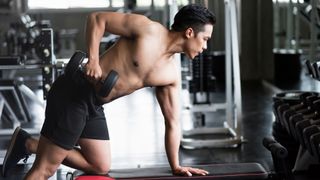
Dumbbell bent over row
In depth: How to do bent over rows
Why? The next best thing if you can’t do pull ups
What does it work? Mainly the lats (upper back muscles) and the biceps, but also a range of smaller muscles on the back and the rear delt too.
How to? Bent over as far as it feels comfortable without arching the back or pulling the hamstrings too much. Feet should be shoulder width apart, core engaged, shoulders open. Then, pull the dumbbells up towards your belly (not the chest), then lower them back down to the starting position.
Essential barbell exercises
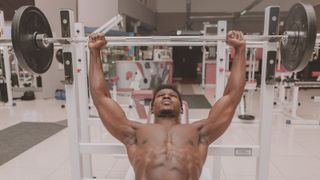
Barbell bench press
In depth: How to bench press correctly
Why? The one and only exercise for building monster pecs.
What does it work? Mainly the pecs and the triceps but also the delts and the smaller muscles around the neck.
How to? (The bench press requires a weights bench with a rack.) Lay down on the bench so the bar is roughly at eye level. It’s important to really dig the feet into the ground and have the core engaged before the bar even leaves the rack. You quite literally hover very heavy weights over your head and chest, all your muscles need to be ready for the lift before it commences.
Grab the bar a little bit over shoulder width apart and push it off the rack. Position it so the arms are pointing straight up. Lower the bar to the chest and make sure the bar touches the chest before it’s being pushed up again. Don’t let the elbows flare out but there is also no need to keep the elbows completely tucked in either. Push the bar back up to the starting position.
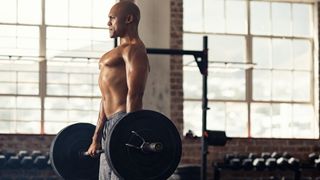
Barbell deadlift
In depth: How to deadlift correctly
Why? The one move full body workout.
What does it work? Almost all the muscles in the body but mainly the lower body, including the quads (front of the thighs), the glutes, back, core, shoulders, forearms, traps (muscles around the neck) and more.
How to? Deadlifts are brutal. The correct form is essential as most deadlifts are performed using seriously heavy weights. Even seasoned lifters can injure themselves if they don’t pay attention. Stand in front of the barbell with legs firmly dug into the ground roughly shoulder width apart. Bend the knees and grab the barbell with the over/under hand position (one hand is facing up and the other one down). Keep the back straight, spine in a neutral position, shoulders open, the bar touching the shins.
Lift the bar up keeping it close to the legs all the way through the movement. Lift through the glutes, not the back: you want to mainly drive the lift with the legs but as you approach the apex point, you also want to straighten the back too so by the time your legs are straight, your whole body is also upright. Follow the same route down, keeping the bar close to the legs. Return to the starting position.
Essential kettlebell exercises
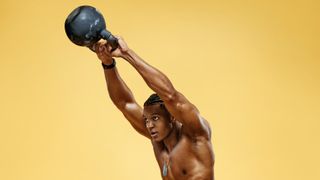
Kettlebell swing
In depth: How to do kettlebell swings
Why? Part cardio, part strength, all out amazing exercise.
What does it work? Similar muscle to the deadlift but the swing uses more dynamic movement.
How to? Starting position is the kettlebell resting on the floor in between your legs, legs are a little bit over shoulder width apart. Reach down for the kettlebell and grab it firmly with both hands. Back is straight, the core engaged. Lift the kettlebell off the floor, swing it forward a bit to gather some momentum, then swing it back between your legs.
From here, pull it up almost all the way to eye level and then pull it back down in between your legs. Don't let the kettlebell ‘fall’ back down, pull it down hard to work those muscles all the way through the workout. Back stays straight all the way through.

Kettlebell/Turkish get up
In depth: How to do Turkish get ups
Why? Turkish get ups will increase muscle coordination like no other exercise.
What does it work? Most muscles in the body but especially the glutes and the delts.
How to? The kettlebell get up is all about transitions. You need to transition from lying to kneeling, then kneeling to standing, then reverse the whole operation until you are back in the starting position.
Feel free to use smaller kettlebells for Turkish get ups: even those will provide plenty of resistance for this one-move kettlebell full body workout.



